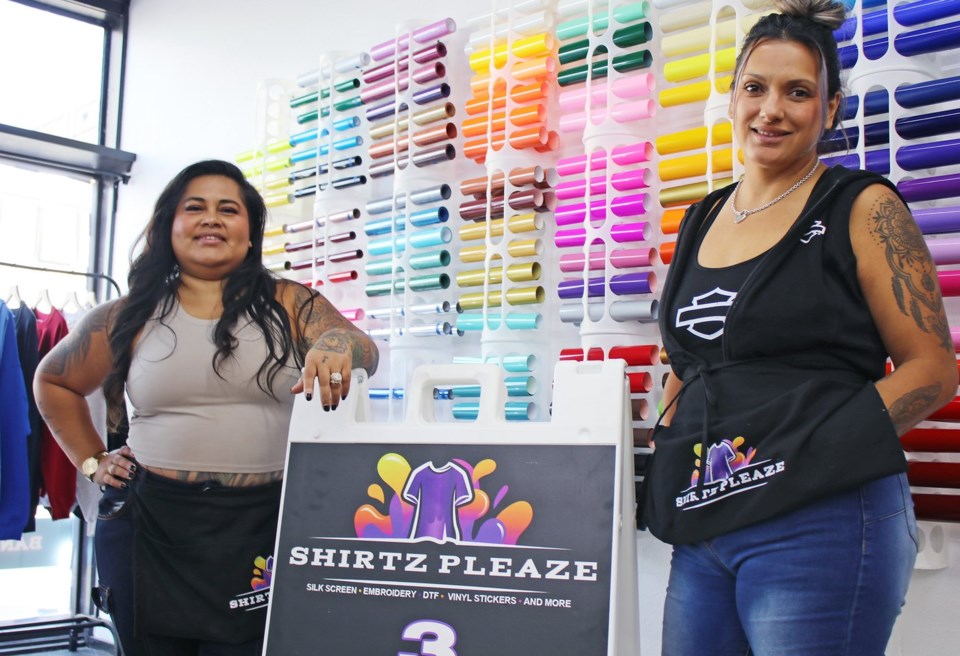WASHINGTON — For Americans living in a handful of battleground states, the United States election has relentlessly inundated their lives for months.
Their televisions show constant advertisements from Democrats and Republicans. If people switch to social media – it's there, too.
It's not just on screens. Vice-President Kamala Harris and former president Donald Trump have repeatedly visited Arizona, Georgia, Michigan, Nevada, North Carolina, Pennsylvania and Wisconsin trying to get every last vote critical for a win.
"From a business perspective I think it's good that the energy is here," said 44-year-old Ventura Lopez, who runs Shirtz Pleaze, a store that makes shirts and other gear that both political parties have purchased in Milwaukee.
But at nearby Marquette University, Chase Harris said it was getting overwhelming. Her mailbox was bursting with campaign literature.
"It feels like there is always something going on. Billboards everywhere, advertising, my whole YouTube TV is political ads," she said.
Most polling shows the seven states remain close in the razor-thin election, but their electoral college votes will provide the keys to the White House.
The electoral college's 538 votes decide the president. Each state has a certain number based on how many seats they have in the House of Representatives plus their two senators.
Whoever achieves 270 electoral college votes gets the presidency.
"The most important state probably this year is Pennsylvania, which has 19 electoral votes,” said Matthew Lebo, a specialist in U.S. politics at Western University in London, Ont. in a recent video.
Trump's 2016 Pennsylvania win was integral to his path to victory. The state narrowly swung back to Joe Biden in 2020.
Pennsylvania voting registration shows that Republicans still have a hearty hold on some areas, said Melissa Haussman, professor emeritus at Carleton University in Ottawa.
Despite an assassination attempt, where one supporter was killed in Butler County earlier this summer, thousands of people have been showing up to Trump rallies in rural areas.
Democrats are holding strong in populous cities like Philadelphia, Pittsburgh and the surrounding suburbs, Haussman said.
Harris said Philadelphia is very important on her path to victory. The city has historically gone to the Democrats but high voter turnout is critical to push back the impact of Trump's rural votes.
"It's the reason I have been spending time here. But I’m feeling very optimistic about the enthusiasm," Harris said Sunday.
Whoever takes Pennsylvania may only need two other battleground states to get enough electoral college votes for the presidency.
The other Midwest states at play are Wisconsin and Michigan, which also went to Trump in 2016 and swung to Biden in 2020.
Democrats now have a "trifecta" in Michigan, meaning two-seat majorities in both the state House and the state Senate.
"It's important because of its trade relationships with Canada," Haussman said.
Canada is Michigan's top export market and the state imported around US$50.9 billion in goods from its northern neighbour last year.
Trump has proposed a 10 per cent across-the-board tariff which could impact that trade relationship, but polling in the Wolverine State remains close.
Georgia, which saw its 16 electoral college votes go Republican for decades, has also become competitive in recent elections.
In 2020, Biden took the state in a narrow victory that came with conspiracy theories over mail-in ballots.
Trump attempted to have the results overturned four years ago and the Republican leader continues to rally on unfounded claims the last election was rigged
Controversy still plagues the state. Earlier this summer, courts denied the Georgia election board’s attempt to change rules requiring all ballots be counted by hand.
Haussman said if Democrats mobilize the state’s large Black and growing Latino and Latina population, Harris could repeat Biden's victory.
But some polls have shown Trump gaining support among Black men, pulling away Democrats' support in places like Atlanta's suburbs.
There are similar demographic concerns for Democrats in North Carolina. Its 16 electoral votes haven't swung Democrat since former president Barack Obama in 2008 but the subsequent elections were won by small margins.
Some recent polling shows a narrow lead for Trump as the state continues to reel from two devastating hurricanes.
“When you've got a state like South Carolina or Georgia with a high Black population, they would favour the Democrats, but what you got to do is get those Democrats out to vote,” Haussman said.
November will also see a showdown in the sunbelt states of Arizona and Nevada. In both states, one county is home to much of the voting population.
In 2020, two-thirds of Nevada votes came from Clark, where Las Vegas is located. Biden lost all other 14 counties, but his 91,000-vote margin over Trump in Clark brought the statewide victory.
It was a similar story in 2020 in Arizona, where 60 per cent of ballots cast came from Maricopa, which includes Phoenix.
Across the swing states experts say Republicans will win if Trump can grow the rural vote, while also making gains among traditional Democrats like Black men and Latinos.
Democrats will likely stay in the White House if Harris can get people who live in cities and suburbs to the polls at high enough numbers to offset the Republican’s solid footing in rural areas.
This report by The Canadian Press was first published Oct. 30, 2024.
— With files from The Associated Press
Kelly Geraldine Malone, The Canadian Press


